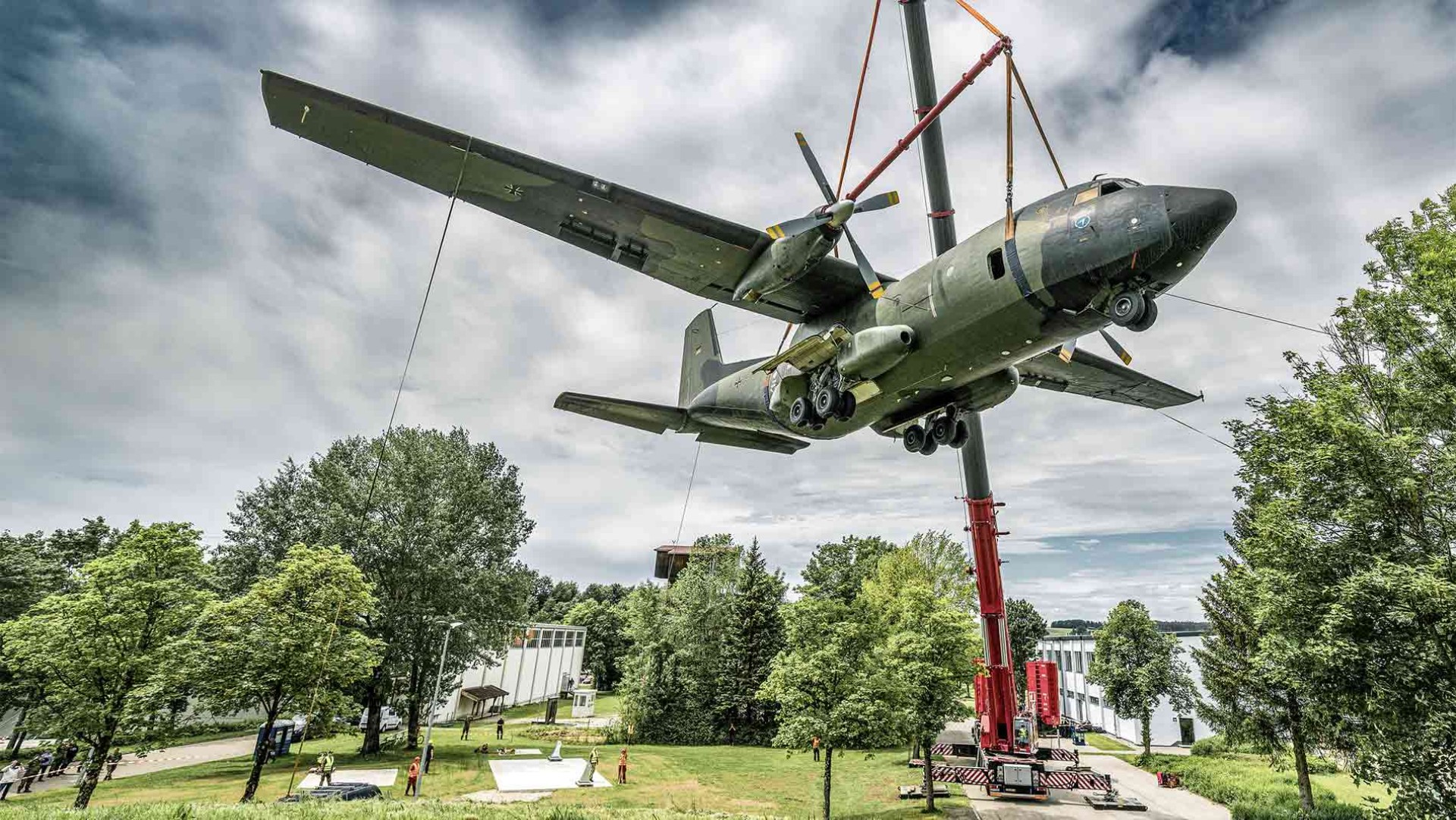
8 minutes - magazine 01 | 2023
Final touchdown
The skies above the barracks in Altenstadt in southern Germany can often be rather busy. After all, this Bundeswehr site, around 60 kilometres from Munich is a training centre for paratroopers, aircraft handling personnel and air carriers.
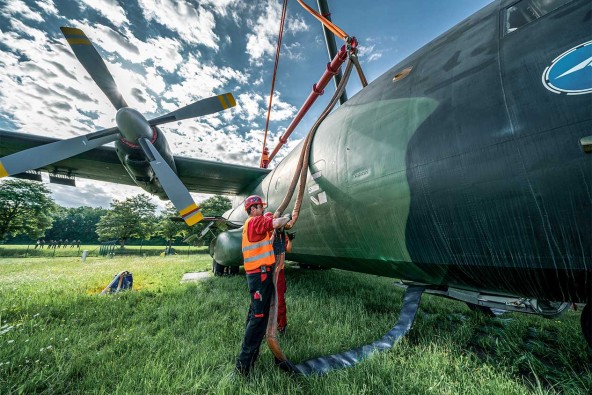
Flying legend - The Transall C-160 transport aircraft had been carrying out military and humanitarian operations by the German Air Force for a whole half century. On the ceiling in the cockpit of the aircraft there is a metal flap which indicates its age as it was used during the first few years of the aircraft’s life by the navigator to bring a sextant into the cockpit to determine its precise position using the stars.
Retired Transall becomes an exhibit
The site is home to the airborne troops and air transport training centre with its own military airstrip. It is usually rather small aircraft that carry trainee paratroopers into the skies so they can jump back down. Larger aircraft can generally only be seen from a distance carrying out jumps on a mass scale. Recently, however, a large Transall C-160 transport aircraft flew directly above the heads of the soldiers. It was actually suspended from the hook of a modern Liebherr crane. The legendary transport plane has been donated to the barracks as an exhibit.
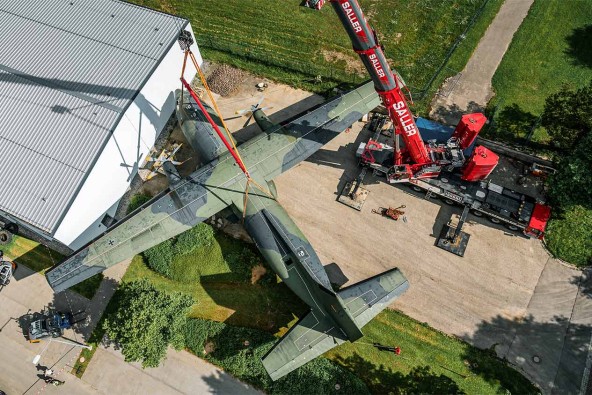
Günther Ulrich has spent much of his working life in the operator cabs of mobile cranes over the last seventeen years. Since his very first crane job, which was using an LTM 1025 manufactured at the beginning of the nineties, the operator from Lower Bavaria has handled a good number of extraordinary hoists and heavy loads. And he has had several curiosities on his hook. “The Transall was an absolute highlight, however”, says Ulrich enthusiastically about the job he carried out using his Liebherr machine. Together with four colleagues, he carried out this challenging job for the Bundeswehr last summer on behalf of Kran Saller GmbH based in Deggendorf. The 55-year-old military aircraft was lifted from the airstrip to near the barracks and into retirement in two extremely tricky hoists.
It was a difficult job, even for experts. The team was faced with tricky ground conditions when they arrived at the barracks the day before completing the actual crane job using a Liebherr LTM 1450-8.1 mobile crane. The 8-axle mobile crane was accompanied by two heavy transporters packed full of set-up equipment. This included the maximum possible counterweight for the crane weighing a total of 134 tonnes. High trees and a neighbouring building severely restricted the space for setting up the crane for the first hoist of the Transall from the fenced airstrip. Nevertheless, the single possible location had been identified within a short time. “Intuition”, explained Günther Ulrich with a grin and gave his colleagues the nod to start work. Setting up the crane could commence.
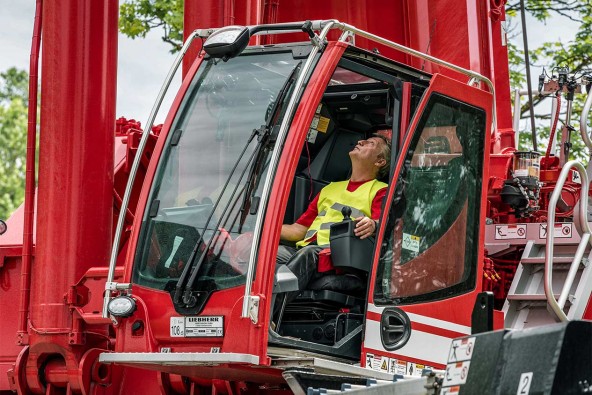
Maximum concentration - Günther Ulrich controls his crane with the military aircraft suspended from it masterfully with a calm hand. The bird’s eye view from above clearly shows the restricted conditions for the temporary placement of the Transall. The 55-year-old is extremely pleased with his powerful machine. “The LTM 1450-8.1 in many situations is actually significantly more powerful than the 500 tonne version”, he adds. “Once it is up and ready, it’s a fantastic crane.”
Six months of planning
During all this time, the camouflage-coloured freighter waited patiently at the edge of the small airfield to be moved into its new home. The Transall C-160 finished its last mission with around 12,000 flying hours under its belt before making its final landing at the army airfield in Altenstadt in Bavaria in November 2021. In the future, the transport aircraft will be an exhibit at the Franz Josef Strauss Barracks. “We have been working to get to this day for six months”, explained Captain Michael Gossler, whilst the mobile crane was being set up nearby. Concept, planning, European tender for the crane work. Lots of paper. But now, you could say: Mission accomplished. Almost, anyway. Then, the next morning, things could finally get underway with the last phase of the job, actually moving the Transall to the barracks.
The German Armed Forces decommissioned the last of what had been a fleet of 110 of these transport aircraft at the end of 2021. Primarily used as a cargo plane, which could land on almost any temporary airstrip, whether it be grass or beach, the Transall, which was developed in the 1960s and continued in production until 1985, only required an extremely short take-off and landing runway of around 700 metres in length. But this flying packhorse was not just used for transporting military personnel and material. Politicians also flew in it if they had to travel to conflict areas. Often, the aircraft hold was filled with aid. The cargo plane was extremely important for carrying out humanitarian missions, for example during the famine in Ethiopia almost 40 years ago as the Transall was able to open its loading ramp at the rear whilst it was still in the air and release its cargo at an altitude of just a few metres. The machine was manufactured by a Franco-German joint venture and during its period of service, which lasted almost 50 years, it gained the reputation of being almost indestructible. The French and Turkish air forces are still using the aircraft today.
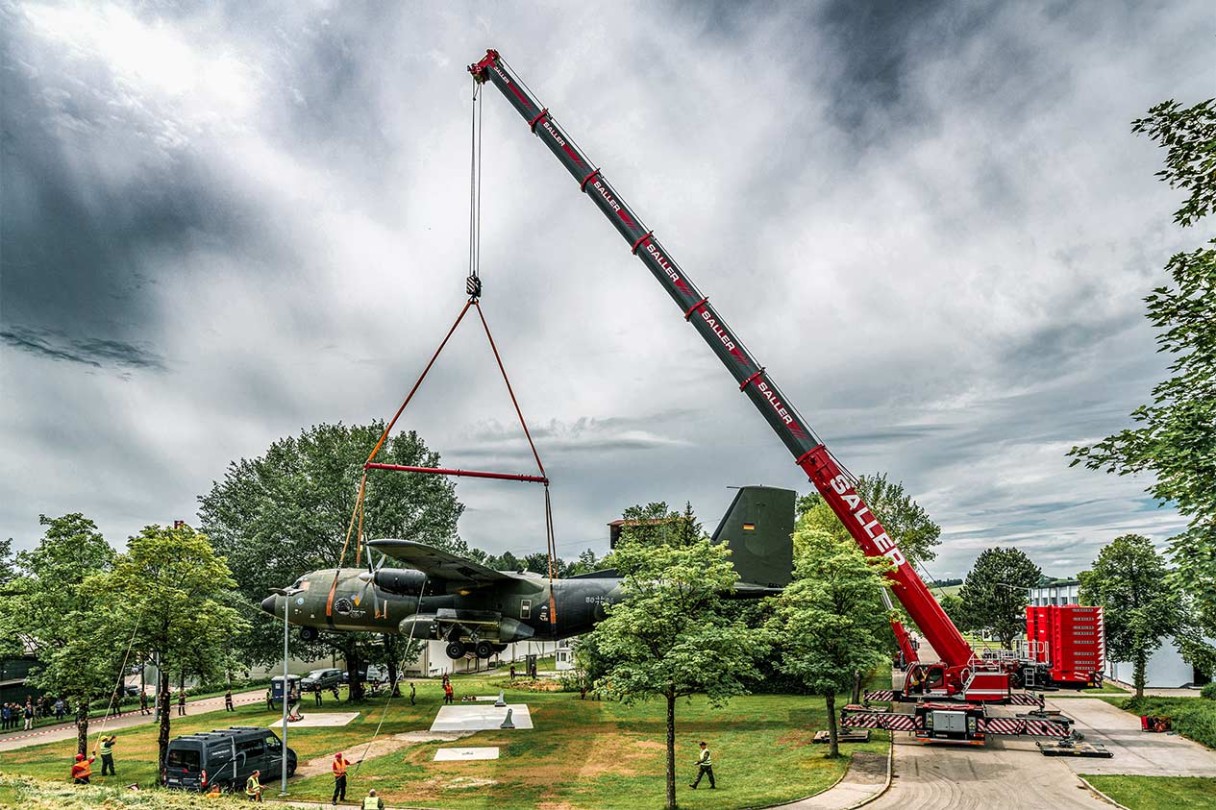
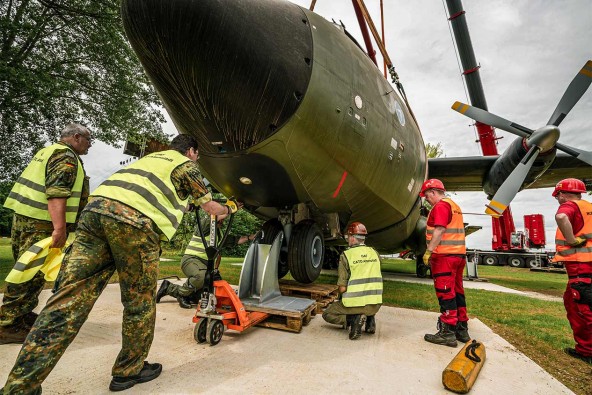
Precision work - The historic military transporter must be manoeuvred with millimetre precision for threading the landing gear into specially made metal frames.
But let’s go back to the barracks in Altenstadt, where the team from Saller had erected their LTM 1450-8.1 ready for action by the evening. Very early the next morning, things finally got moving. Günter Ulrich swung the specially made twelve metre yoke over the aircraft. Broad hoisting straps were placed around its fuselage and aligned precisely. The first hoist of the aircraft was an exciting moment as the forecast gross load of 34.5 tonnes with an impressive radius of 30 metres meant that the crane was operating at the limits of its load chart. But actually, after the removal of secret military technology, together with pulleys and control gear, the net weight of the machine fell into the green zone for the crane.
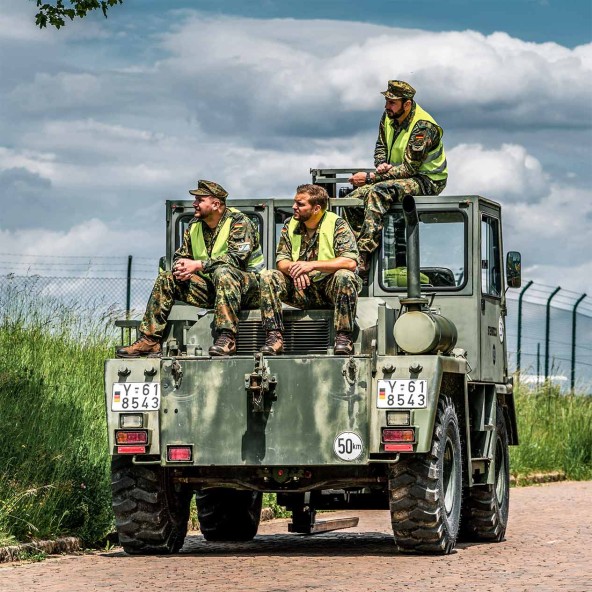
On the Steinbock’s back - The military forklift manufactured by Steinbock is not just extremely practical for handling heavy goods. It provided these three soldiers from the airborne troop training centre in Altenstadt with a great view of proceedings.
Precision touchdown
When the Transall was placed in its intermediate position, we saw exactly what is meant by expert skills – Günther Ulrich and the team around him moved the thirty metre cargo plane with its span of exactly forty metres between the mobile crane and the neighbouring building before placing it on the ground. The gap between the nose of the aircraft and the wall of the building was less than 60 centimetres. What a touchdown!
A few hours later, after the mobile crane had been repositioned, the second “flight” of the C-160 to its planned final resting place was then a matter of routine. One of the wings had to be moved away from surrounding trees with the powerful support of several soldiers on the retaining ropes, but after a very short time, its landing gear had been successfully positioned on the prepared concrete plinths and the decommissioned military aircraft was in position. After a long, varied operational life, the Transall had finally been retired.
This article was published in the UpLoad magazine 01 | 2023.



